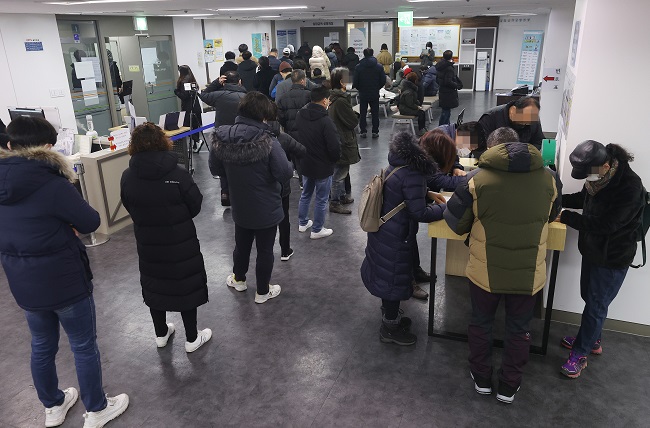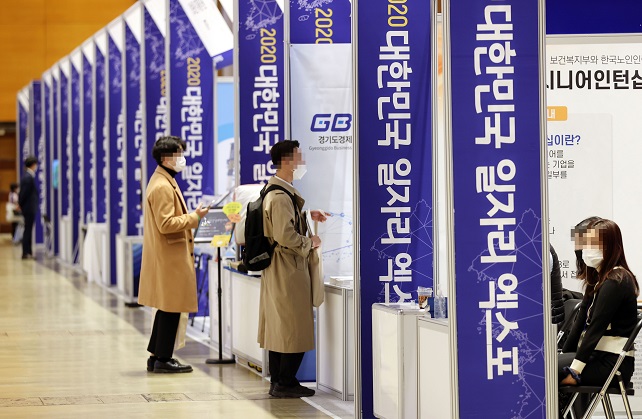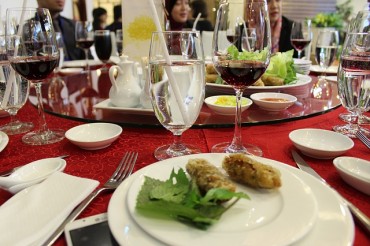
People stand in line to attend a presentation on how to receive unemployment benefits at a labor welfare center in Seoul on Jan. 13, 2021. According to government data, the number of employed people stood at 26.90 million last year, down 218,000, the largest loss since 1998, when the 1997-98 Asian financial crisis hit the country. (Yonhap)
SEOUL, Jan. 15 (Korea Bizwire) — Concerns are growing about South Korea’s young people who are facing the risk of falling into what some are calling a ‘lost generation,’ as the prospects of a so-called job cliff are deepening due to the COVID-19 pandemic.
According to Statistics Korea, the annual jobless rate of young people between 15 and 29 years of age stood at 9 percent last year, far higher than the overall jobless rate of 4 percent, but up just 0.1 percentage points compared to a year ago.
At first glance, this doesn’t look that bad. However, a closer look shows that the reality is far worse.
The extended jobless rate of young people stood at 26 percent in December 2020, up 5.2 percentage points from a year ago and 11.4 percentage points higher than the average extended jobless rate of the entire age group.
As of the end of last year, the number of young people in the extended jobless state totaled 1,223,000, up 213,000 from a year before (1,001,000).
In particular, people in their 20s were hit the hardest during the COVID-19 outbreak.
The economic activity participation for all youth was 46.4 percent last year, down 1.4 percentage points from a year ago.

In this file photo taken Nov. 11, 2020, jobseekers look around booths of a job fair in the Convention and Exhibition Center in southern Seoul. (Yonhap)
However, those between the ages of 20 and 29 saw this rate fall by 2.7 percentage points and those between 25 and 29 years of age by 3 percentage points.
This figure is about three times higher than that for people in their 30s (minus 0.6 percentage points), 40s (minus 1.1 percentage points) and 50s (minus 0.8 percentage points).
The economically active population includes those in any kind of work – part time or full time, short term or long term – as well as individuals who are actively looking for work but remain jobless.
The economic activity participation rate will inevitably decline if the number of people who stop job seeking activities or lose their will to get a job due to the aggravation of the job market increases.
Among the non-economically active population, the number of those in their 20s who took break without job seeking activities totaled 415,000, up 25.2 percent or 84,000 from a year ago, higher than that of people in their 30s at 18.8 percent and 40s at 23.4 percent.
Among those in their 20s, the number of those who took a break from work reached 415,000 last year, up 132,000 in just two years.
J. S. Shin (js_shin@koreabizwire.com)






